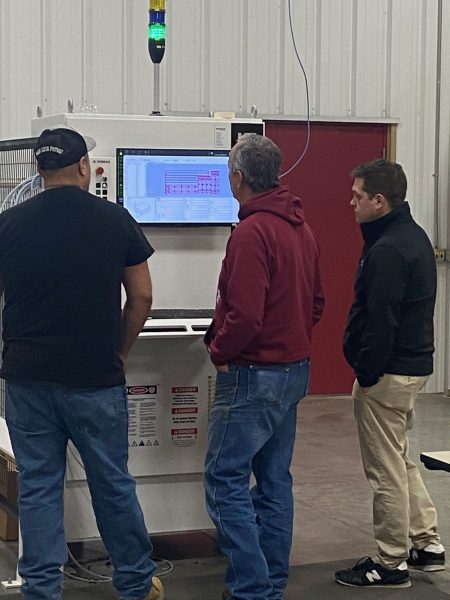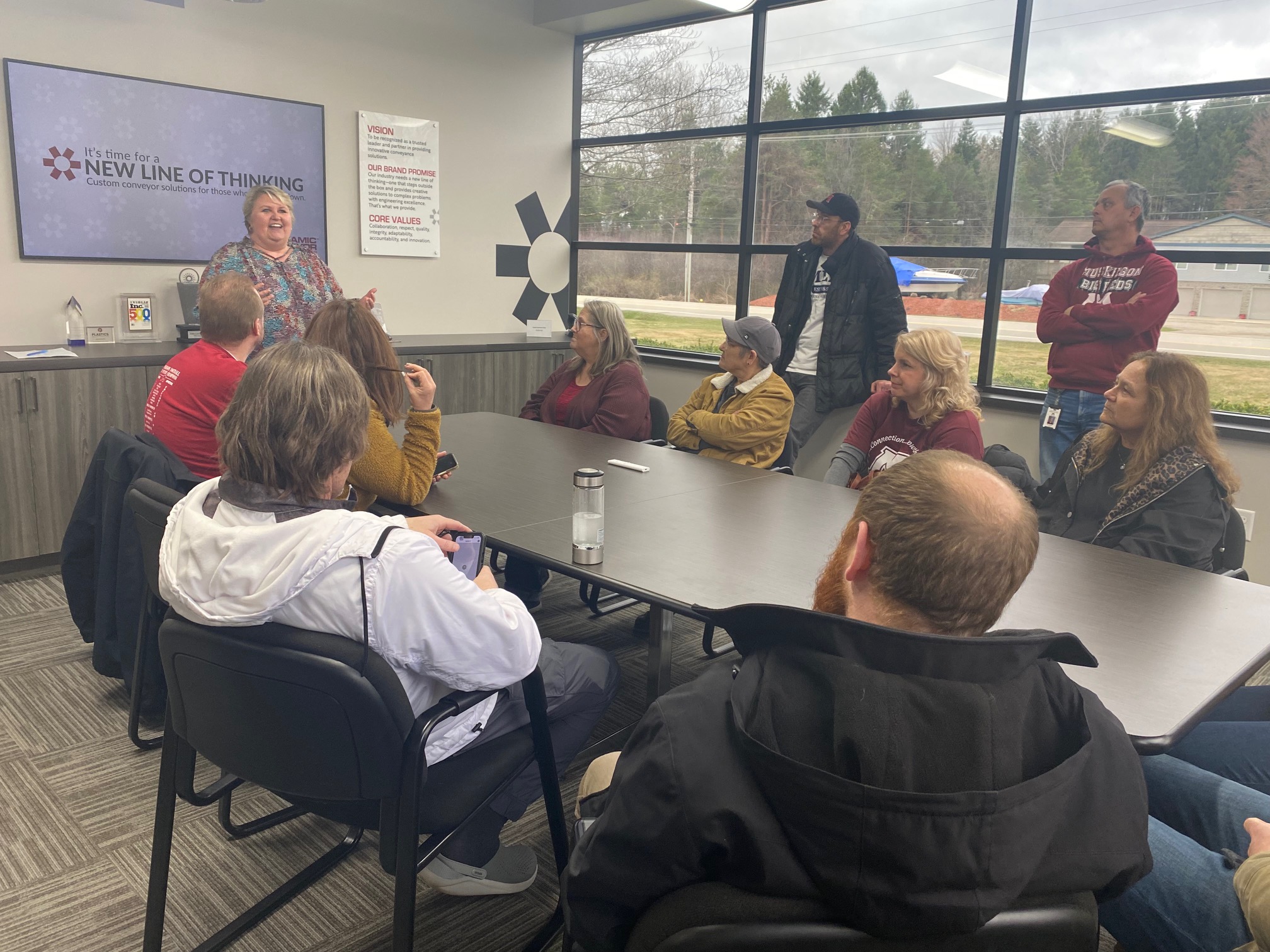In an era where the landscape of education and employment is constantly evolving, bridging the gap between what students learn in classrooms and what they need to succeed in the workforce is paramount. Recently, a small group of resolute teachers from Muskegon High School embarked on a journey to gain firsthand insight into what businesses are truly seeking when hiring new workers. Their visit to our conveyor manufacturing facility not only shed light on the skills and qualities valued by employers but also sparked a dialogue on how education can better prepare students for the demands of the modern workplace.
Exploring Beyond the Classroom Walls
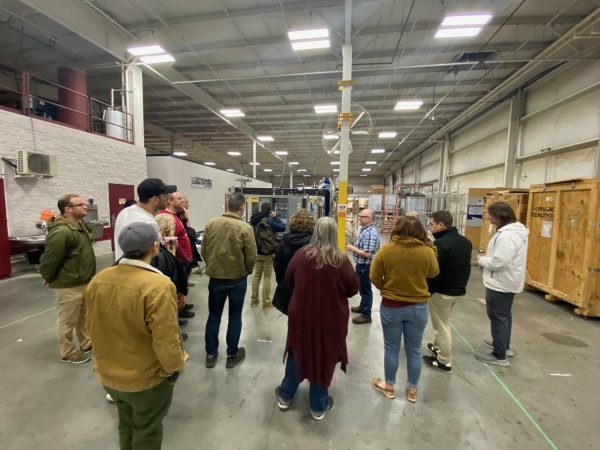 Stepping outside the confines of traditional education settings, these forward-thinking educators set out to immerse themselves in the world of the manufacturing industry. As a local conveyor manufacturing facility taking pride in its innovation and commitment to excellence and community, we were excited to host and support this initiative-taking effort to bridge the gap between academia and the real world.
Stepping outside the confines of traditional education settings, these forward-thinking educators set out to immerse themselves in the world of the manufacturing industry. As a local conveyor manufacturing facility taking pride in its innovation and commitment to excellence and community, we were excited to host and support this initiative-taking effort to bridge the gap between academia and the real world.
Insights Unveiled: What Businesses Seek in New Hires
Upon arriving to our manufacturing facility, our staff welcomed the teachers and gave a comprehensive tour of the production floor where our custom conveyor systems are built. As usual, the production floor was bustling with activity while Roy Garn our Production Supervisor guided teachers through the facility and shared valuable insights into the skills and attributes coveted by employers like Dynamic Conveyor.
The importance of technical ability and skills was a clear focus throughout the tour. From operating simple tools for mechanical assembly to sophisticated CNC machinery and the ability to troubleshoot complex systems, employees are expected to have a solid foundation in technical know-how. This underscored the significance of incorporating technical, practical, firsthand experiences into the curriculum to equip students with the skills needed by employers. Certifications in AutoCAD, CNC programming and Forklift operation was sighted of importance.
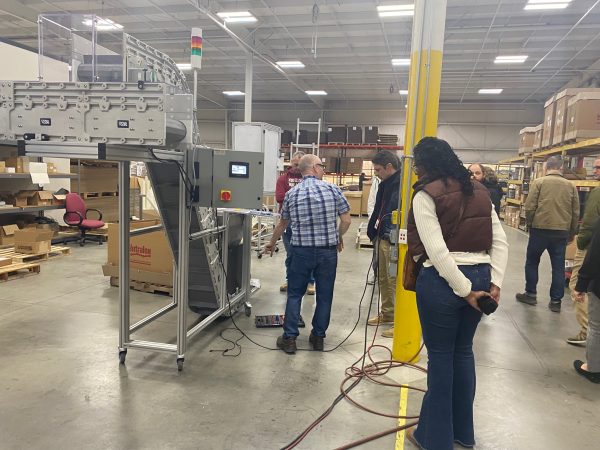 Garn also stressed the importance of students being exposed to the myriad possibilities that exist within manufacturing facilities beyond the conventional perception of labor-intensive, unclean environments. It’s essential for them to understand that these spaces offer diverse career pathways, with many opportunities for advancement from within. Contrary to common assumptions, numerous managers have ascended from the shop floor to leadership roles, illustrating the potential for growth and development. By instilling this awareness, students can realize that their initial interests in specific areas can serve as steppingstones to significant, long-term accomplishments within the manufacturing industry.
Garn also stressed the importance of students being exposed to the myriad possibilities that exist within manufacturing facilities beyond the conventional perception of labor-intensive, unclean environments. It’s essential for them to understand that these spaces offer diverse career pathways, with many opportunities for advancement from within. Contrary to common assumptions, numerous managers have ascended from the shop floor to leadership roles, illustrating the potential for growth and development. By instilling this awareness, students can realize that their initial interests in specific areas can serve as steppingstones to significant, long-term accomplishments within the manufacturing industry.
In today’s interconnected world, collaboration is paramount with teamwork driving innovation and problem-solving within a manufacturing facility, emphasizing the need for educators to cultivate collaborative environments in classrooms. Likewise, adaptability and resilience are essential in the dynamic manufacturing industry, where employees must navigate challenges, embrace change, and continuously upskill, accentuating the importance of instilling a growth mindset in students. Furthermore, critical thinking and problem-solving skills are at the core of success in operations, from optimizing processes to streamlining supply chains, prompting educators to prioritize fostering these skills in students to approach challenges with creativity and resourcefulness.
Empowering Education for Future Success
Armed with newfound insights, the teachers returned to their classrooms with a renewed sense of purpose. They recognized that education wasn’t just about imparting knowledge; it was about empowering students with the skills, attitudes, and aptitudes needed to thrive in an ever-evolving landscape.
The visit was organized by Kath VanTil, Design Thinking Coach, from Muskegon Area ISD. By aligning curriculum goals with industry expectations, educators can aim to equip students with a holistic skill set that transcends academic boundaries. The visit to the manufacturing facility created an important dialogue among educators and industry stakeholders that will help the effort to bridge the gap between education and employment, ensuring that students are prepared for the workforce.
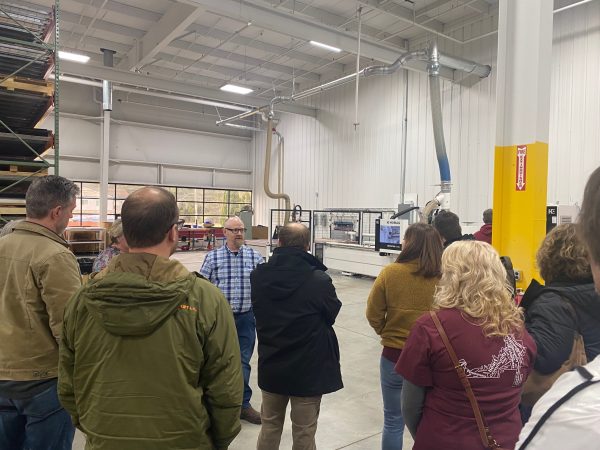 It was our pleasure to be part of the collaboration and the dialogue. We believe that it is through this type of collaboration we can cultivate the skills and qualities needed to nurture a pipeline of valuable workers for the future job market and empower students to succeed.
It was our pleasure to be part of the collaboration and the dialogue. We believe that it is through this type of collaboration we can cultivate the skills and qualities needed to nurture a pipeline of valuable workers for the future job market and empower students to succeed.
